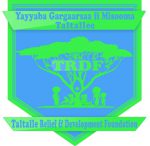The Centre for the Study of Ancient Documents
A short walk from the Ashmolean, the Centre for the Study of Ancient Documents (CSAD) is making waves through the Ioannou Centre for Classical and Byzantine Studies on St Giles’. The interview happens to be set up for more information about new imaging technology that is getting used to reveal previously illegible inscriptions that are ancient.
I’m here to fulfill Dr Jane Massйglia, an Oxford alumna, former teacher that is buy an essay secondary now research fellow for AshLI (the Ashmolean Latin Inscription Project). Jane actively works to encourage general public engagement with translating these ancient documents. There are many nice types of this: calling out on Twitter when it comes to interested public to have a stab at translating these ancient inscriptions.
The person that is second meeting today is Ben Altshuler, ‘our amazing RTI whizzkid.’ RTI, or Reflectance Transformation Imaging, could be the software used to decipher previously impenetrable inscriptions. Ben Altshuler, 20, happens to be dealing with CSAD on his gap year before starting a Classics degree at Harvard later this year.
What is the remit of CSAD and exactly how did it come to be?
‘The centre started about 20 years ago,’ Jane tells me. ‘It was born out of several big projects involving original texts just like the Vindolanda tablets (a Roman site in northern England which has yielded the oldest surviving handwritten documents in Britain). There was suddenly a need to house various projects that are different Classics looking at primary source material, and an expression it was better joined up together. It’s wise: epigraphers, the folks who study these ancient inscriptions – do things in a similar way with similar resources and technology.
‘In regards to everything we do now, the centre currently holds a number of projects like AshLI, the Corpus of Ptolemaic Inscriptions (CPI) and also the Lexicon of Greek Personal Names (LGPN).
‘This is how it began,’ she says and shows me a “squeeze”.
The ‘squeezes’ are stored in large boxes which are stacked floor to ceiling at the heart.
‘Some of the work that is ongoing the centre is within sifting and analysing what exactly is in these archives. The system that is new far more accessible – in the immediate future we will be able to view the squeezes on a pc and, within the long term, there clearly was talk of searchable indexes of RTI images and integration with open source and widely used commercial platforms, like Photoshop.’
Ben, how do you come to be so a part of CSAD at 20?
‘In the previous few several years of High School I took part in an history that is oral organised by the Classics Conclave and American Philological Association,’ Ben tells me. ‘Although we were interviewing classicists at Oxford, Roger Michel, the top regarding the Conclave, saw a number of places within the University and surrounding museums where new technology could thrive. I was offered a sponsorship that is two-year the CSAD as an imaging expert within the fall following my graduation, and I also spent the last year building up technical expertise to offer the necessary support during my work with Oxford.
‘from the classical language side so I came into it. I quickly saw that to be very successful in epigraphy takes several years of experience. But with RTI you can master the technology in a relatively short period of time. I really could make a much bigger impact providing the skills that are technical processed images for established classicists to work on utilizing their language expertise.’
Ben shows me a video he is manufactured from the different effects RTI can make in illuminating previously indecipherable texts (or, in this situation, a coin).
Here prominent classist Mary Beard interviews Ben as well as others at CSAD to learn more on how RTI has been used to help make new discoveries possible within Humanities.
